Walk through the town of ANSE-À-VEAU
Wear your kepi. Put on your sneakers, grab a bottle of water and then reassure yourself that your phone can capture images. The starting point for this walk is at Carrefour Michel. We are going to walk through the town of Anse-à-Veau.
Four kilometers from the Grande Rivière de Nippes at Carrefour Michel, the city opens its two portals to us which lead one towards the Lower Town, the other towards the Upper Town, two Siamese towns which describe the city.
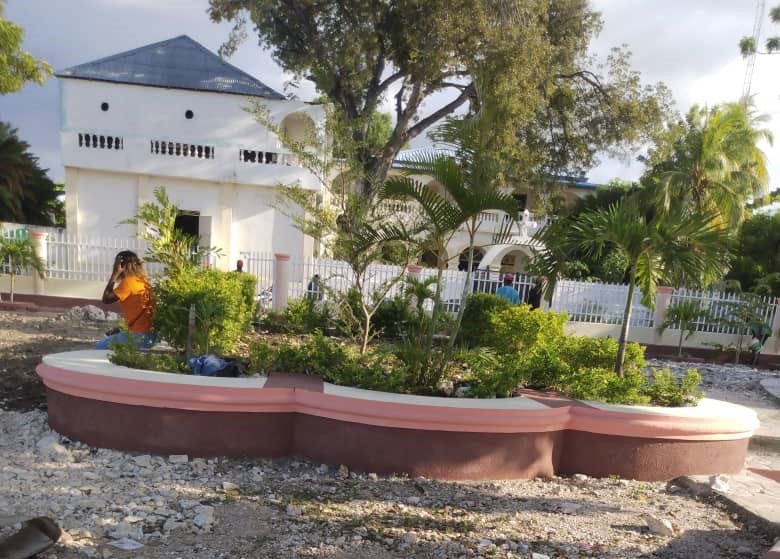
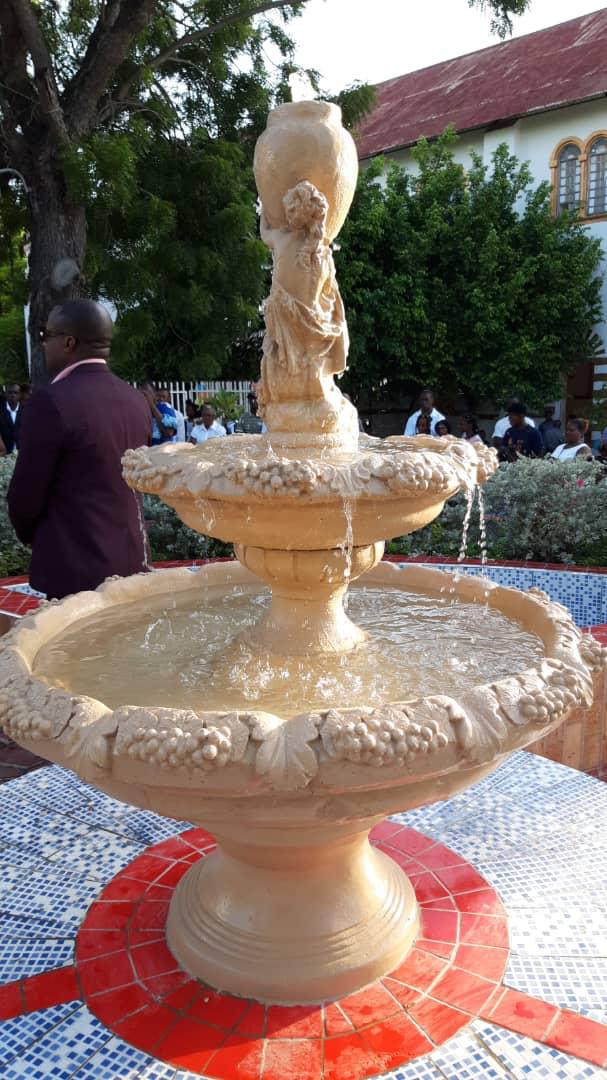

Anse-à-Veau, the Upper Town in its boasting, perched on a plateau where the Prestigious Church sits and the Lower Town anchored in the basin of resourcefulness offered itself to the joy of living in freedom, although it was subject to floods following the overflowing of the Salomon pool or the flow of the sea in bad weather.
From Carrefour Michel we head towards the Upper Town via rue du Jubilé with its alleys lined with interior houses, most of which are hidden by trees. There, we are greeted by the beautiful entrance which leads to the stele dedicated to President Geffrard.
This roundabout near the Bishop's Palace serves as a guide via Rue Gouin to: the School Inspection, the Palace of Justice, the High School, the Village Saine Anne (nearly 80 small houses) and the College of the same name, the University, the Sisters' School, the Parish Hall, the Presbytery, the Cathedral and its Tercentenary Square. A jaunt to the left takes you into the cemetery on a ramp towards the Lower Town, so don't linger there. We quickly return to the Rond-point, there “Poz Café” offers you a beer or a modern cup before visiting the Marc Antoine Lspérance College.

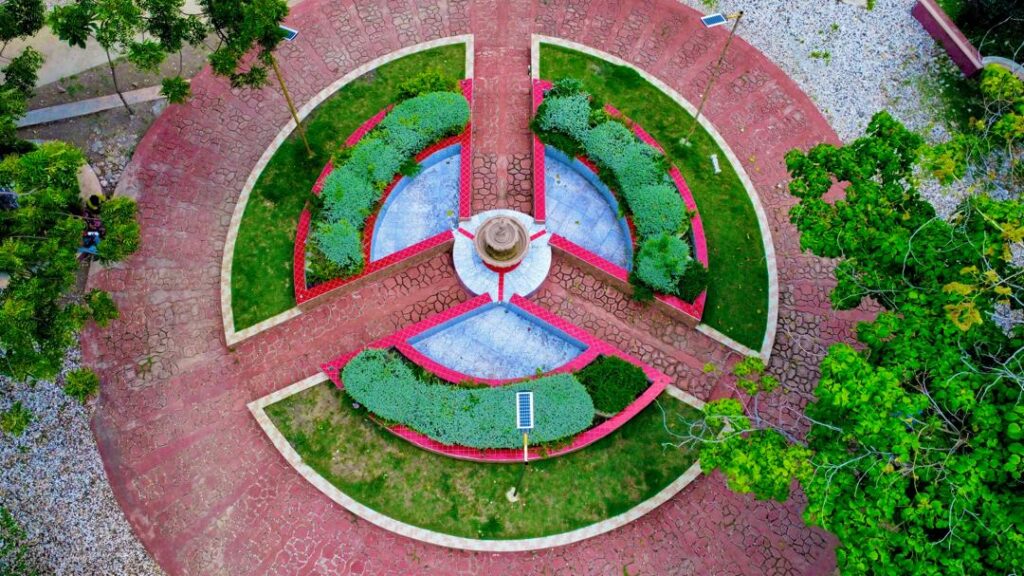
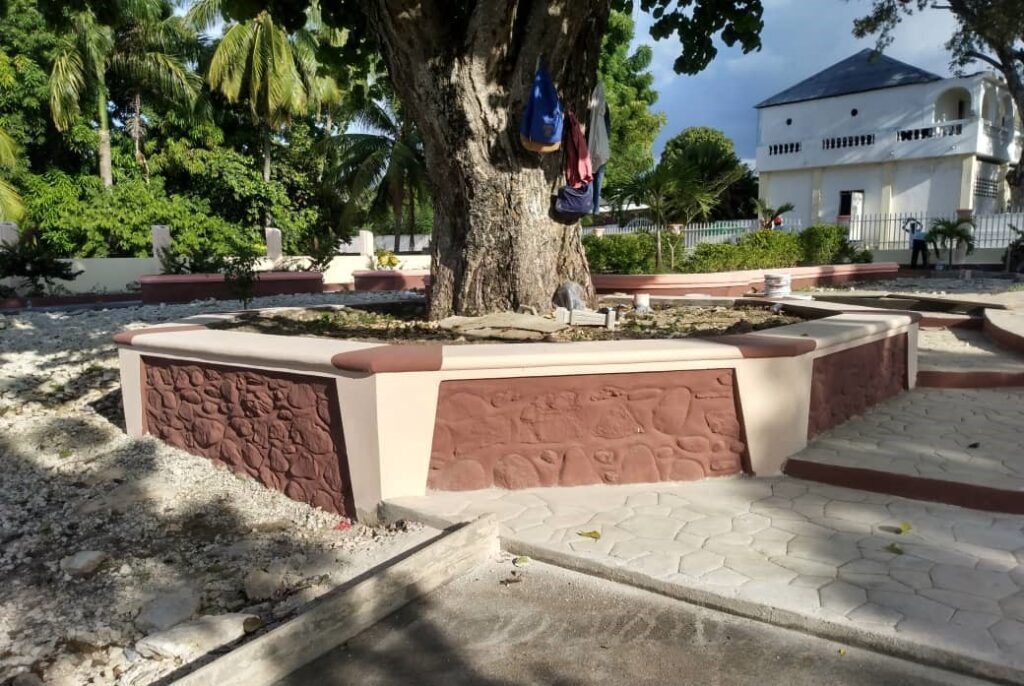
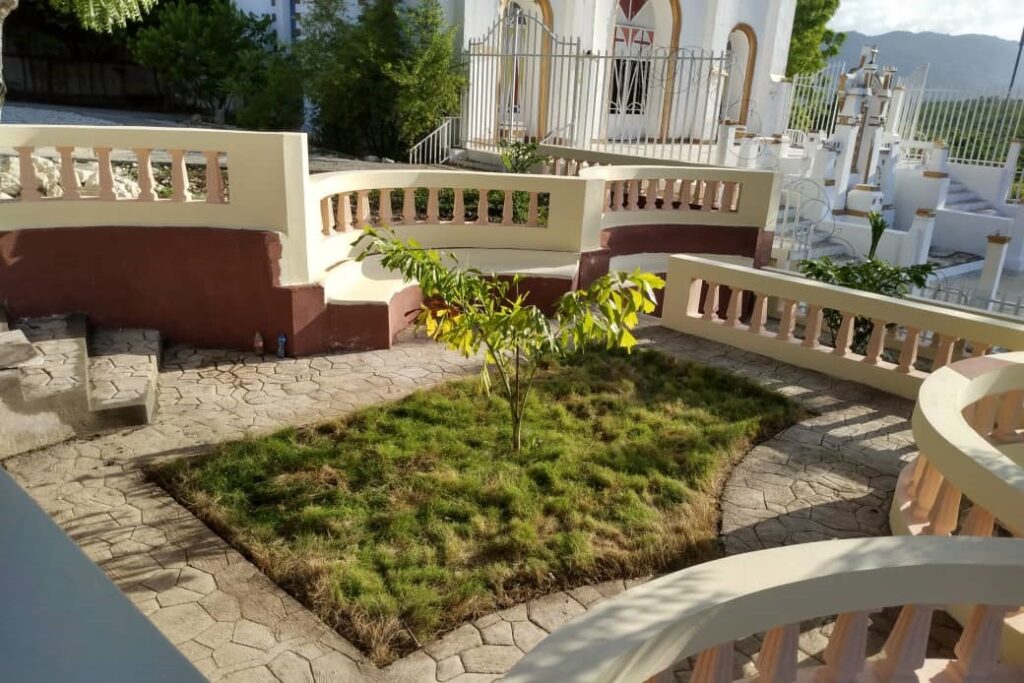
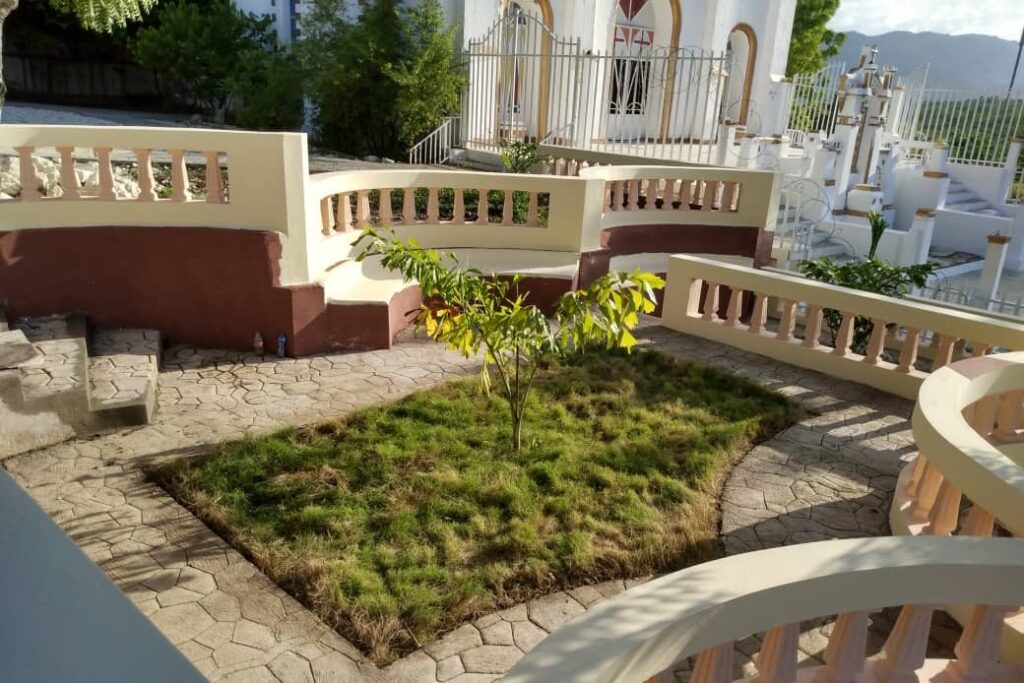

Then we go down facing the sea, you have to cross yourself because the ordeal is watching you, on your left hand in your antics on the beaches neighboring the Hôtel Francoville-Villa and Ti-Barcadère located in a new district under construction. The HSF Association (Haitian Sports Foundation) also has its sports and IT complex there which supports young people. On the way back, the Crucified accompanies you on the walk that leads to Rue de l'Hôpital, with the hope of receiving care in this place as well as in the private clinic of Doctor Serge Cyrille since the money can be obtained from the BNC nearby.
Just opposite the bank in a New Quarter, on Rue Saint Francois, the dance floor '''La Renaissance'' invites you to waltz to the grooves of two musical groups from the city J-Wolf or Classique or under the digital dexterity of the DJs or you can linger for research at the Municipal Library. The Peace Court, the Civil Status Office and the Vice Delegation sit here. Back on the route, the clinic of Doctor Serge Cyril welcomes you. Then silence, on the right the Adventist temple welcomes you. At the crossroads, a little further, up there on the left: the imposing Cathedral with its thirty steps captures your attention. A little further down at the foot of the Cathedral, a small market and restaurant await you under the control of the office of the Municipal Tax Department. In this perfect square of the Public Square everything operates in rigid discipline so as not to be scolded, by the Police Station erected in front of the Town Hall behind Madame Colo's back. Under the protection of two large cannons, this adorable and marvelous fountain projects water through the mouths of its four macaroons in basins. We turn off to the right along rue Alexandre Pétion which starts from the bottom of the Cathedral at the corner we cross the Auberge la Différence and continue towards the sea with a nod to ''la Respectable loge'' The Truth'. This street borders perpendicularly the parallel streets Saint Laurent and Général Félix Morisseau, this block which is traditionally called Rue Abri.
These two streets lead to the rue du Général Etienne Elie Gérin which housed: the former Ecole des Frères and the Lycée Boisrond Tonnerre which hides Fort Saint Laurent (a long and high curvilinear wall), the office of President Sudre Dartiguenave (in ruins). ) and the mausoleum of General Gérin (brief moment of reflection). From this corner a parapet extends Rue de l’Hôpital towards the Seaside.
Running alongside the other side of the square, rue Gerin, parallel to rue Alexandre Pétion, forms a right angle with Rue Henry Christophe (or Rue de la Place) which passes in front of the Town Hall. About ten meters away a small path starting from the side of the church crosses it and leads via Madame Edner Hill to the Lower Town. Thus the first walk ends with rue Gérin which, in its strangeness, leads to the Lower Town.
Rue Gérin has become at this level Rue du Drapeau overlooked by the electrical plant, it leads to the Lower Town. A shortcut by stairs called Boss Alfred in front of a new Clinic quickly takes you to Lower Town. Straight ahead, this street continues its route under the name of rue Anacreon Charles. Right in the middle it connects to Rue du Cimetière which leads back to the Upper Town. We return to this intersection for a short prayer at the Methodist Church, before continuing on the main Rue de la Rivière, already a few steps away we turn right, to follow the long and twisted rue Titus Bance, which strangely on its The route has two other names: Rue Salomon and Rue du Bord de Mer crossed by two culverts: Famille Fleury bridge and Madame Lapresse bridge. This street in the fishing village leads straight to the wharf in time and leads back towards the Upper Town.
We go up this long street to discover the Rue de la Rivière, the straightest and widest in the city, at the corner the house of Mérorès received important personalities for chat in the shade of a glass and under the gaze of the bottle. Three meters from the return to the left we take rue Georges where the Baptist Christians meditate, on the right two alleys ending in a “Greek Y” leading to the road to A l’Usine; at the height of Georges shout the gaguère lovers. From this street we stop at the new Place du Marché where a district rises just behind the cemetery in the bosom of the two former Mixed Primary schools and the Saints Anges relocated before joining the Carrefour Michel.
We go back down to continue the walk via rue de la Rivière a short while after a small bridge we fall into contemplation in front of the other public fountain Ti-Cécé with its eternal everyday market as sentinel of the football field. Twenty steps back on the street we are in the area of the Hall of Jehovah’s Witnesses. Finally at the terminus of rue De La Rivière we marvel at the shantytown behind Madame Leblanc’s pretty house. Just opposite, the road to A l’Usine leads to Arnaud in nostalgia for the legendary and late Mango Félix. Another branch crosses the Pont Vincent on the Acul des Savanes river and takes you by road to Petit-Trou de Nippes.






In Lower Town: piano, libraries and cerebral games attracted august visitors. No room for anxiety. Here we laugh, we dance, a setting for pleasure and work. In Anse-à-Veau you had to be strong, smoking like a torch, in your mind and in your brain, because everyone should be of privileged intelligence.
The Lower Town, a modest town where a high-end society moved, hoping to find itself again. Lower Town was buzzing with commercial activity and financial affairs. Social ease was identified in the physical complexion of the moment and in the bustling business. On its plateau on the side of the rising sun the last resting place of silence, its cemetery, keeps many good stories buried.
Anse-à-Veau was known as a jewel, unfortunately, which has lost its splendor but preserves its values.
While exploring the city, we climb and descend the slopes which give it its top and unique touch in its configuration of two contiguous cubes raised on two levels each.
Since 2012 two imposing bridges have led to the city of writers and heroes and the church has taken on sacred epaulettes. It is, through the piety consecrated to the Cathedral, a step towards the eradication of the evil one which is gnawing away at the city. Its History at large, material not oral, survives through the years. Hated, fought, betrayed by men as by nature, she resisted as strong as a reed. Consulting on its formidable brains: its artists, its personalities and its heroes who place it on a platter of honor.
The town holds strong in its “ansavoptimism” thanks to the new orientation of its sons and its youth. It looks forward to a promising future. She jumps on the boards stretched out by the revenge of history claiming its rights. In this small cove which opens onto the Lower Town, Anse-à-Veau was built in 1721 and inherited until the end by men who never wavered in their chauvinism and who will keep it, for a long time, in their myth of originary and original pride, as marvelous as it is attractive in its apparent misery.
Welcome to the city of painters: Dieudonné Cédor, Laurent Casimir, Antilhomme Francois, Vonette Pierre; Theorists-Writers: Solon Ménos, Emmanuel Edouard, and technical writers: Jules Faine, Francois Severin, Jocelerme Privert, Wando Saint-Villier, Jusner Petit-Frère, Harold Souffrant etc, etc, also presidents of the Republic of Haiti : Guillaume Fabre Nicolas Geffrard, Philippe Sudre Dartiguenave and Jocelerme Privert.
Anse-à-Veau, the capricious bee that flies, stings, and transplants, delivers its Mead Special to you. Enjoy your stay in the proverbial calm of the city of protocol and pretension, a haven of reflection.
After this long and tiring walk as in your hours of desired tourism, welcome you Francoville-Villa, the Inns and Motel: La Différence and Chez Morel, the ''Poz Kafe'' in the Upper Town, Chez Jacky in the Lower Town - City.
This is how the city is configured with well-marked avenues which, like folds in pants, define its verticality under the whims of the North and the anger of nature.
Once high society, she welcomed and welcomes majestically like a prince in the articulation of speech and the elegance of dress. Everything confirmed luxury and height in a silence of untapped happiness.
Pedantry warmly settled into the worldly greeting that prefers “how are you”? At “Koman ou ye”? Both convey the same feeling. All come from the loving heart. I love you with my heart and I cherish you with my heart. However, the "I love you" won the prize for decorum as much as the children were forced to entertain themselves in the "three times, go that way, it's the last one that stays there" rather than 'scream in the ''ti chicken sove wi Wa, kenbe li pou mwen, wi Wa''. Not a question of taste, just a social reason.
May these Three Hundred Years mark its time and pave the way for the Four Hundred Years with the participation of the Ansavelais who will put their city on the two floors of which they are so chauvinistic in the spotlight and this logically with reference to its political, social and cultural.
In any case, Anse-à-Veau, three centuries old, the respectful hostess of Protestantism, worthy protector of voodoo and privileged witness of Catholicism and Anglicanism in Haiti, places her trust in God the One who gives in gift intelligence to men in order to accomplish good and great things for the well-being of humanity.
In the name of the Father, the Son and the Holy Spirit.
Texte de Kenel Regis:
Membre du Conseil d’Administration de AAVP
